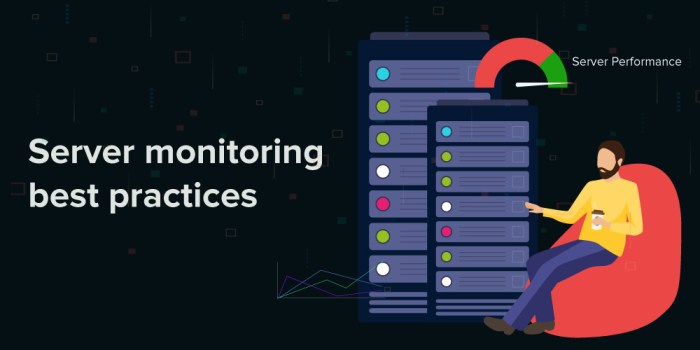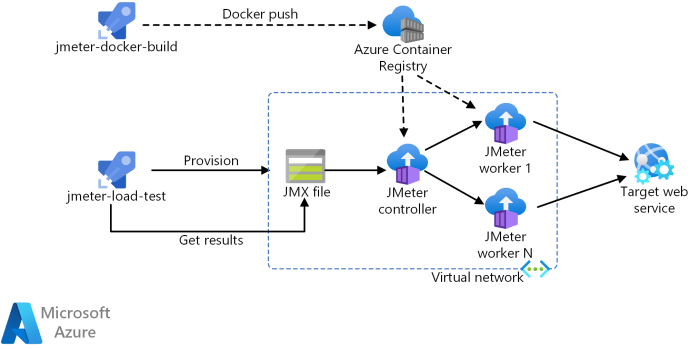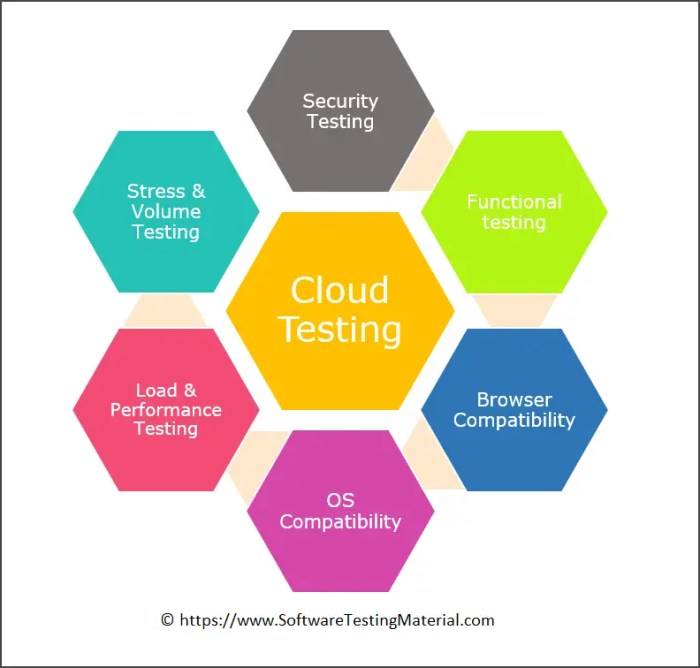Cloud Server Performance Testing: Optimizing Performance for Cloud-Based Applications
Cloud server performance testing is a crucial aspect of ensuring optimal performance for cloud-based applications. By understanding key performance metrics, load testing methodologies, and cloud-specific considerations, organizations can effectively evaluate and optimize the performance of their cloud servers.
This comprehensive guide will delve into the intricacies of cloud server performance testing, providing practical insights and strategies to enhance the performance of cloud-based applications.
Performance Metrics Analysis
Analyzing key performance metrics is crucial for evaluating cloud server performance and identifying areas for improvement. Industry-standard benchmarks and tools help measure these metrics accurately.
Response Time
Response time measures the time taken for a server to respond to a request. It’s a critical metric for user experience and website performance.
Cloud server performance testing is crucial for ensuring optimal performance and reliability. However, security is also paramount. By understanding Cloud diagram server security , you can proactively identify and mitigate potential threats. This knowledge complements Cloud server performance testing, empowering you to optimize performance while maintaining a robust security posture.
- Benchmarks:< 200ms for interactive websites, < 500ms for non-interactive websites
- Tools: Google PageSpeed Insights, WebPageTest
Throughput
Throughput measures the amount of data transferred per unit of time. It indicates the server’s capacity to handle traffic.
- Benchmarks: 100-500 requests per second for shared hosting, 1000-10,000 requests per second for dedicated hosting
- Tools: Apache Bench, JMeter
Resource Utilization
Resource utilization monitors the usage of CPU, memory, and disk space. It helps identify potential bottlenecks and optimize resource allocation.
- Benchmarks: CPU usage< 80%, memory usage < 70%, disk space usage < 80%
- Tools: CloudWatch, New Relic
Factors Impacting Performance
Several factors influence cloud server performance, including:
- Workload: Type and volume of requests
- Infrastructure: Server type, number of cores, RAM capacity
- Configuration: Operating system, software settings, security measures
Load Testing Methodologies

Load testing methodologies are techniques used to evaluate the performance of a system under varying levels of load. Different methodologies are employed based on specific testing objectives and system characteristics.
Stress Testing
Stress testing involves subjecting a system to an extreme load beyond its normal operating capacity. The purpose is to identify the breaking point and determine the system’s resilience under extreme conditions. Stress testing helps ensure that the system can handle unexpected surges in demand or malicious attacks.
Soak Testing
Soak testing involves running a system at a constant load for an extended period, typically hours or days. This methodology aims to uncover performance degradation or stability issues that may arise over time. Soak testing is particularly useful for identifying memory leaks, resource exhaustion, and other long-term performance problems.
Spike Testing
Spike testing involves subjecting a system to a sudden and significant increase in load, followed by a rapid decrease. This methodology simulates real-world scenarios where traffic patterns fluctuate rapidly. Spike testing helps ensure that the system can handle sudden bursts of activity without crashing or significantly impacting performance.
Choosing the Appropriate Methodology
The choice of load testing methodology depends on the specific testing objectives and system characteristics. Stress testing is suitable for identifying the system’s limits, soak testing for uncovering long-term performance issues, and spike testing for evaluating the system’s response to sudden load changes.
Cloud-Specific Considerations

Performance testing in cloud environments presents unique challenges due to their inherent characteristics, such as multi-tenancy, elasticity, and resource allocation. These factors can significantly impact testing results and require specific considerations to ensure accurate and meaningful testing.
Multi-tenancy, where multiple users share the same physical infrastructure, can introduce performance variability due to resource contention. Elasticity, the ability to scale resources on demand, can make it challenging to maintain consistent performance levels during testing. Additionally, resource allocation policies and configurations can affect the availability and performance of resources during testing.
Cloud server performance testing is crucial to ensure optimal application performance. To gain a deeper understanding of server performance, refer to the Cloud diagram server performance . This diagram provides a comprehensive overview of server components and their impact on performance.
By leveraging this resource, you can refine your testing strategies and enhance the overall efficiency of your cloud-based applications.
Mitigating Challenges
To mitigate these challenges, it is essential to:
- Identify and isolate test environments from production environments to avoid interference.
- Use dedicated resources or capacity reservations to ensure consistent performance during testing.
- Monitor resource utilization and adjust test load accordingly to prevent over-provisioning or under-provisioning.
- Consider using cloud-specific performance testing tools that are designed to handle the complexities of cloud environments.
Automation and Scalability

Automating performance testing processes is crucial to ensure efficiency, accuracy, and consistency. It eliminates manual interventions, reduces testing time, and enables continuous monitoring of application performance.
To design and implement automated testing frameworks, consider using industry-standard tools and methodologies. Define clear testing goals, establish performance benchmarks, and create automated test scripts that cover a wide range of scenarios.
Cloud-Based Testing Platforms, Cloud server performance testing
Cloud-based testing platforms offer scalability and cost optimization benefits. They provide access to a wide range of computing resources, enabling the execution of large-scale load tests. The pay-as-you-go pricing model allows for flexible resource allocation and cost control.
- Scalability:Cloud platforms can seamlessly scale up or down based on testing requirements, ensuring optimal resource utilization.
- Cost Optimization:By utilizing cloud resources only when needed, organizations can avoid overprovisioning and save on infrastructure costs.
Data Analysis and Reporting: Cloud Server Performance Testing
Analyzing and reporting performance testing data is crucial for understanding system behavior, identifying bottlenecks, and making informed decisions. This section discusses key data points, statistical techniques, and visualization tools for interpreting and presenting testing results effectively.
Key Data Points
- Response Time:The time taken for a request to be processed and a response to be received.
- Throughput:The number of requests processed per unit of time.
- Error Rate:The percentage of requests that fail or encounter errors.
- Resource Utilization:The usage of CPU, memory, network, and other resources during the test.
- Concurrency:The number of simultaneous requests or users being handled.
Statistical Techniques
Statistical techniques such as percentiles, confidence intervals, and hypothesis testing can be used to analyze performance data:
- Percentiles:Identify the percentage of requests that meet or exceed a specific response time threshold.
- Confidence Intervals:Estimate the range within which the true mean response time or throughput lies with a certain level of confidence.
- Hypothesis Testing:Determine whether there is a statistically significant difference between two or more performance metrics.
Visualization Tools
Visualization tools help present testing results in a clear and accessible way:
- Time Series Charts:Plot metrics over time, showing trends and fluctuations.
- Histograms:Display the distribution of response times or other metrics.
- Scatter Plots:Correlate different performance metrics to identify relationships.
Comprehensive Performance Reports
Performance reports should provide a comprehensive overview of the testing results and actionable insights:
- Executive Summary:A high-level summary of the key findings and recommendations.
- Test Methodology:A description of the test setup, scenarios, and tools used.
- Data Analysis:Statistical analysis and visualization of the performance metrics.
- Recommendations:Specific actions to improve system performance or address bottlenecks.
- Appendix:Detailed data tables, scripts, and other supporting materials.
Final Thoughts
In conclusion, cloud server performance testing is an essential practice for organizations seeking to maximize the performance and reliability of their cloud-based applications. By leveraging the techniques and strategies Artikeld in this guide, organizations can effectively identify and address performance bottlenecks, ensuring optimal user experience and business success.












